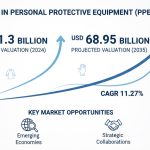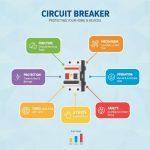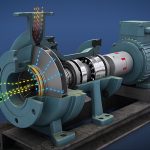The global burden of glaucoma is intensifying, particularly among aging populations. As one of the leading causes of irreversible blindness worldwide, glaucoma is becoming an increasingly urgent public health concern. At the same time, rapid advancements in artificial intelligence (AI) are revolutionizing the medical landscape. These two megatrends – the rise of aging demographics and the proliferation of AI technologies – are significantly transforming the glaucoma surgery devices market.
In this comprehensive blog, we will explore how these factors are driving growth in the glaucoma surgery devices market, analyze emerging trends, and highlight forecasts for the future. Whether you are an investor, healthcare professional, manufacturer, or policymaker, understanding these dynamics is key to staying ahead in this evolving sector.
Understanding Glaucoma and Surgical Interventions
What is Glaucoma?
Glaucoma refers to a group of eye conditions that damage the optic nerve, typically due to elevated intraocular pressure (IOP). If untreated, glaucoma can lead to gradual vision loss and, eventually, blindness. Primary open-angle glaucoma and angle-closure glaucoma are the most common types.
Surgical Treatments for Glaucoma
When medications and laser therapies fail, surgical intervention becomes necessary. Glaucoma surgery devices play a vital role in controlling intraocular pressure by improving aqueous humor drainage. These include:
- Trabeculectomy devices
- Drainage implants
- Minimally Invasive Glaucoma Surgery (MIGS) devices
Among these, MIGS devices have gained prominence due to their safety profile, faster recovery times, and effectiveness.
How Aging Populations Are Driving Market Growth
- Global Demographic Trends
The World Health Organization estimates that the global population aged 60 years and older will double by 2050, reaching 2.1 billion. Since the risk of developing glaucoma increases with age, this demographic shift significantly contributes to rising glaucoma prevalence.
- Age as a Major Risk Factor
Research indicates that individuals over 60 are six times more likely to develop glaucoma. The aging eye is more susceptible to changes in intraocular pressure and optic nerve damage. Therefore, countries with rapidly aging populations – such as Japan, Germany, and Italy – are experiencing a surge in demand for glaucoma treatments and surgical devices.
- Increased Healthcare Spending
Older adults typically have higher healthcare needs, leading to increased spending on eye care services. Governments and private insurers are allocating more resources for managing age-related eye diseases. This investment boosts the demand for advanced glaucoma surgery devices.
- Geriatric Patient Preferences
Modern glaucoma surgery devices, particularly MIGS, align well with geriatric patient preferences:
- Minimally invasive techniques
- Shorter recovery periods
- Fewer complications
These attributes make MIGS devices an attractive option for elderly patients, encouraging widespread adoption.
The Role of Artificial Intelligence in Glaucoma Management
AI in Diagnosis
AI algorithms are increasingly being used to detect glaucoma at earlier stages. Tools leveraging deep learning analyze retinal images, optic nerve scans, and visual field tests with remarkable accuracy.
Benefits:
- Early diagnosis reduces the need for invasive surgery.
- Enables large-scale screening in remote or underserved regions.
- AI-Powered Surgical Planning
AI systems can assist ophthalmologists in surgical planning by evaluating patient-specific data and predicting outcomes. This improves precision and enhances surgical success rates.
Integration with Glaucoma Surgery Devices
Manufacturers are integrating AI into glaucoma surgery devices to:
- Monitor intraocular pressure in real-time
- Customize drainage flow rates
- Alert physicians to post-operative complications
These smart devices lead to improved patient outcomes and lower complication rates.
Robotic and Image-Guided Surgery
While still emerging, robotic-assisted eye surgeries and image-guided procedures are gaining traction. AI is central to this transformation, providing surgeons with enhanced visualization and control.
Technological Innovations in Glaucoma Surgery Devices
Smart Drainage Implants
Advanced implants now include sensors that monitor IOP and transmit data wirelessly to clinicians. These innovations reduce the need for frequent follow-ups and enable timely intervention.
Next-Gen MIGS Devices
Manufacturers are investing in research to create:
- Smaller, more flexible stents
- Biocompatible materials
- Devices with better flow regulation
Examples include:
- iStent inject® W by Glaukos
- XEN Gel Stent by Allergan
- Hydrus Microstent by Ivantis (Alcon)
AI-Enhanced Imaging
High-resolution imaging technologies powered by AI are being integrated into surgical workflows. This helps in:
- Identifying optimal implant positions
- Detecting anatomical changes
- Minimizing surgical errors
Regulatory and Policy Impacts
AI and Medical Device Regulations
With AI integration, regulatory bodies like the FDA and EMA are evolving their frameworks to ensure safety and efficacy. This includes:
- Algorithms transparency
- Patient data privacy
- Device re-certification for updates
- Reimbursement Policies
Supportive reimbursement policies for glaucoma surgeries and devices encourage adoption. As AI proves its clinical value, insurers are more likely to cover AI-powered tools.
Challenges and Considerations
High Cost of Devices
Advanced surgical devices and AI-enabled systems can be expensive, limiting access in low-income regions.
Training and Adoption Barriers
Surgeons require training to operate AI-powered systems, and some may resist transitioning from conventional methods.
Data Privacy and Ethics
AI systems must comply with stringent data protection regulations like HIPAA and GDPR. Ensuring ethical use of patient data is crucial.
Future Outlook: What to Expect
- Personalized Glaucoma Surgery
With AI, patient-specific data will drive personalized treatment plans, improving long-term outcomes.
- Expansion into Emerging Markets
Manufacturers are targeting countries in Africa, Latin America, and Southeast Asia to tap into untapped markets.
- Continued R&D Investments
Expect a surge in R&D funding focused on:
- Wearable glaucoma monitoring devices
- AI-driven predictive analytics
- Sustainable, low-cost surgical solutions
- Rise of Teleophthalmology
AI tools will further enable remote diagnosis and post-op monitoring, especially beneficial for elderly patients in rural areas.
Conclusion
The convergence of aging populations and artificial intelligence is reshaping the glaucoma surgery devices market in profound ways. While aging demographics are expanding the patient base, AI is transforming diagnostics, surgical planning, and device performance. These trends are creating immense opportunities for innovation, investment, and improved patient care.
As we move forward, stakeholders across the healthcare ecosystem must embrace these advancements to unlock the full potential of glaucoma treatment. By doing so, we can ensure better quality of life for millions of patients worldwide and reduce the global burden of irreversible blindness.
![[Market Research Reports] – Research Google News Blog | VMR.Biz](https://www.vmr.biz/wp-content/uploads/2022/12/logo-removebg-preview.png)











